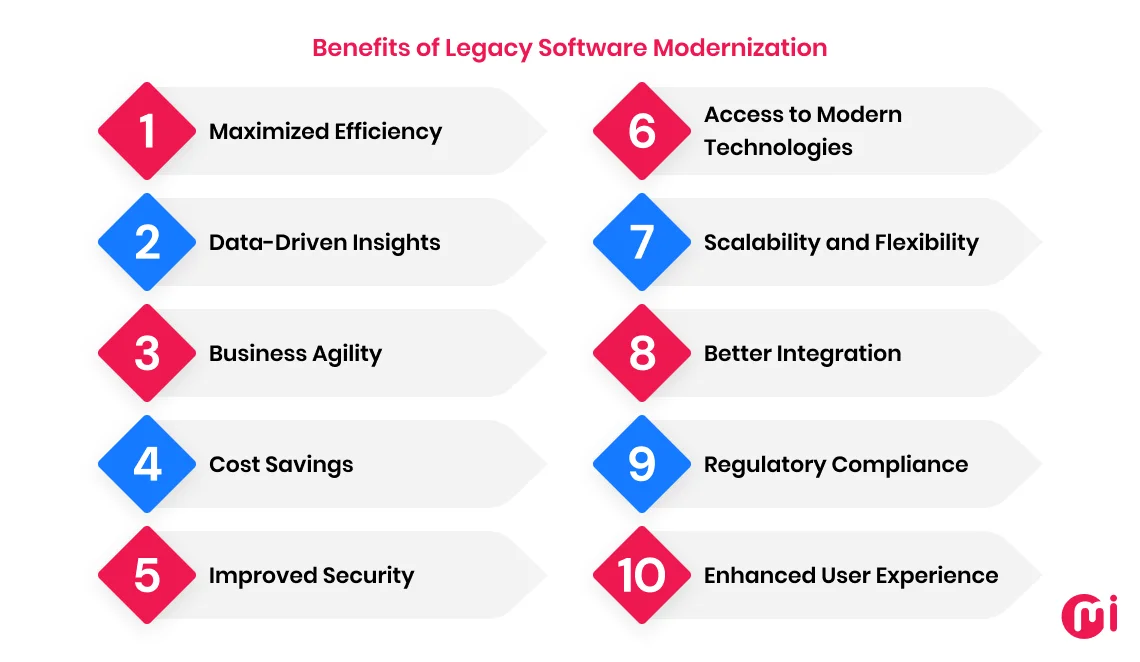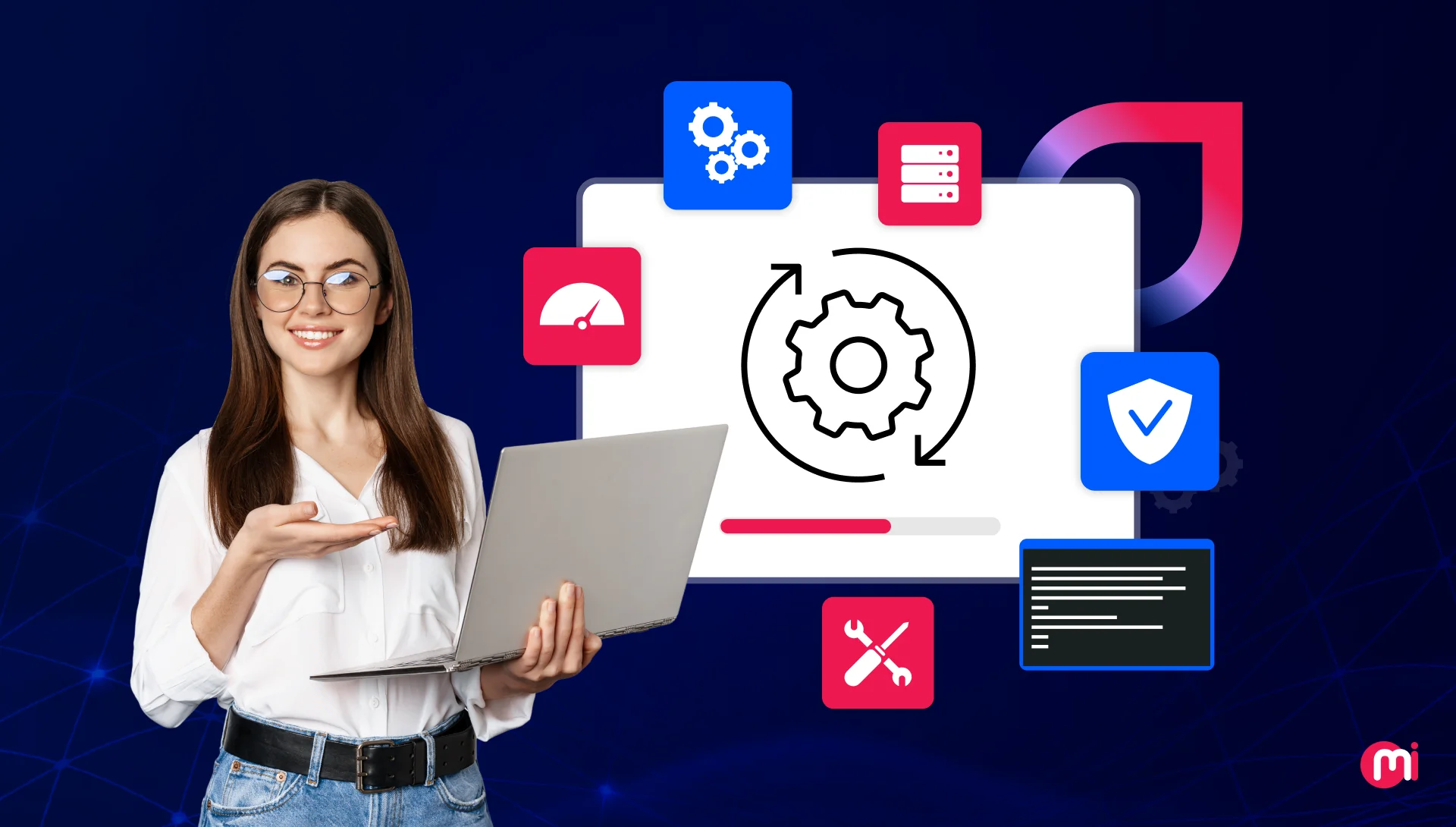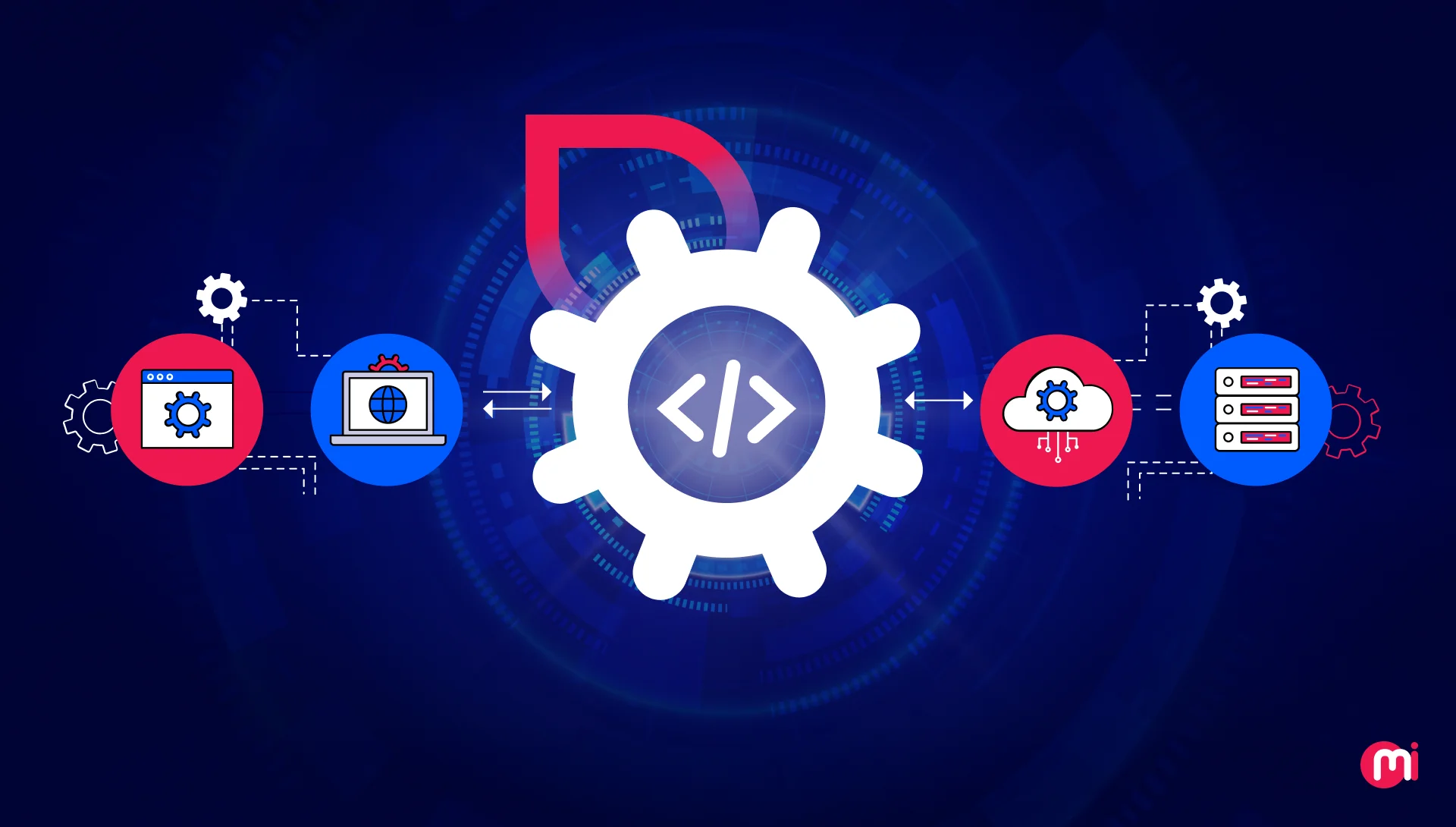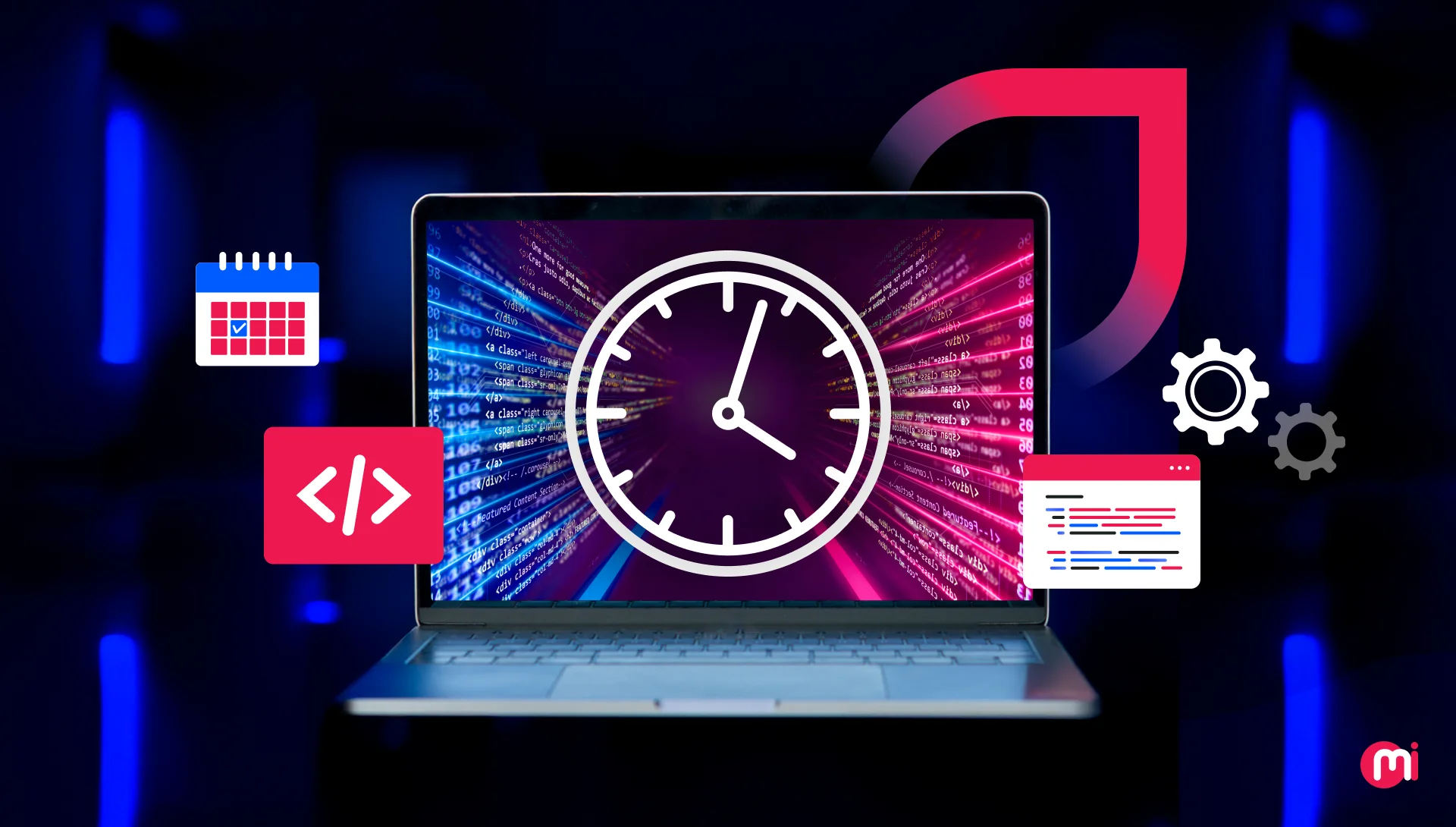Top Benefits and Challenges of Legacy Software Modernization for Businesses
- Software
- October 28, 2025
According to MarketsandMarkets, maintaining legacy systems costs organizations an average of USD 40,000 per year. Additionally, legacy systems comprise approximately 31% of an organization’s technology infrastructure, with 60–80% of IT budgets often dedicated to maintaining their operation.
That constant drain limits innovation, slows growth, and uses valuable resources. Legacy software modernization changes that equation. When businesses upgrade their old systems, they reduce costs, enhance performance, and strengthen security.
Modern platforms scale easily, integrate better with new technologies, and create room for innovation. Still, the path to modernization comes with real challenges. Data migration, integration issues, and managing change across teams can test even the most capable organizations.
Success of legacy software modernization depends on having a clear application modernization strategy, the right tools, and a strong commitment to long-term transformation. This guide explores the key benefits and challenges in legacy software modernization and shares in-depth insights to help businesses plan, prioritize, and succeed in their initiatives.
Key Takeaways
- Software modernization upgrades outdated systems into agile, future-ready platforms.
- The benefits of legacy software modernization include efficiency, agility, cost savings, data insights, security, better integration, improved user experience, etc.
- Modernization also propels the business forward, unlocks strategic agility, amplifies operational intelligence, and expands market influence.
- Challenges like technical debt, data migration, integration, skill gaps, budget and resource limits, and more might arise, requiring careful planning and strategic execution.
What is Legacy Software Modernization?
Legacy software modernization is the process of upgrading, improving, or replacing older software systems to make them compatible with current technologies and business needs. These systems, while often critical to daily operations, may be built on outdated infrastructure or programming languages that limit their adaptability.
Approaches to modernization include rehosting, refactoring, replatforming, and rebuilding or replacing. Legacy software modernization helps organizations keep their systems relevant and aligned with evolving technological demands.
Key Benefits of Legacy Software Modernization
Key benefits of legacy software modernization include maximized efficiency, data-driven insights, business agility, cost savings, and improved security. It also provides access to modern technologies, scalability and flexibility, better integration, regulatory compliance, and enhanced user experience.
With these advantages, organizations can stay competitive and future-ready. Here is an in-depth overview of each advantage:

1. Maximized Efficiency
Legacy systems slow teams down with frequent maintenance, slow processing, and fragmented workflows. A 2025 survey by GlobeNewsWire reveals that U.S.-based IT professionals found that 62% of organizations still rely on legacy software, even though it limits speed and agility.
Enterprise application modernization that automates routine tasks, streamlines workflows, and eliminates downtime. This shift lets enterprises redirect focus toward innovation, digital transformation strategy, and customer-centric initiatives, ensuring operations remain agile even as the business scales.
2. Data-Driven Insights
Legacy software often fragments data across multiple systems, preventing organizations from accessing a unified, real-time view of their operations. Modern systems consolidate data, standardize formats, and support advanced analytics, allowing teams to detect patterns, predict trends, and make proactive decisions.
Modern systems also support advanced analytics and reporting, helping organizations identify trends, uncover inefficiencies, and anticipate potential challenges. With clear visibility into operations, businesses can optimize processes, align strategies with real-world insights, and respond proactively to market changes.
In short, modernization transforms raw data into a powerful decision-making asset that drives growth and operational excellence.
3. Business Agility
Business agility is one of the prime benefits of legacy software modernization, as legacy systems often hinder organizations’ ability to swiftly adapt to market changes and evolving customer demands. Modernizing these systems enhances flexibility, enabling businesses to respond more rapidly and effectively.
A 2025 survey by Kyndryl found that 37% of respondents anticipate increased business agility through AI and generative AI integration on mainframes, highlighting the role of modernization in fostering adaptability. Beyond speed, modernization strengthens strategic responsiveness.
Organizations can adjust business models, test new ideas, and respond to disruptions more effectively. Streamlined workflows, faster decision-making, and better alignment between IT and business goals ensure companies stay competitive and resilient in a rapidly changing market.

4. Cost Savings
The U.S. Government Accountability Office report states that ten critical federal legacy systems cost $337 million annually to operate, accounting for nearly 80% of federal agencies’ IT budgets. Meanwhile, Moldstud says that about 60% of organizations still using COBOL struggle to find skilled developers, making modernization a top priority.
Legacy software modernization cuts costs and restores control over IT spending. Outdated systems demand constant maintenance, rare technical skills, and endless manual fixes that slow teams down. Modern architectures such as cloud, APIs, and modular frameworks remove those limits and simplify operations.
Modern platforms update automatically, scale with demand, and connect with emerging technologies. Teams spend less time patching old code and more time driving innovation. IT budgets shift from maintenance to growth, turning technology into a direct source of efficiency and long-term value.
5. Improved Security
Global data breaches cost organizations an average of $4.44 million in 2025, according to IBM’s Cost of Data Breach Report. Certain industries face even higher financial exposure. Legacy systems increase risk because they extend breach detection times, giving attackers more opportunity to access sensitive data.
Modernizing legacy software enables organizations to implement up-to-date security measures, such as encryption, multi-factor authentication, and regular security patches. These measures strengthen defenses against cyber threats and help maintain regulatory compliance. For instance, banks that have implemented next-generation core systems report a 47% reduction in fraud-related losses.
Organizations that deploy AI-driven security and automated defenses reduce breach costs. Upgrading to modern systems also facilitates the integration of advanced security technologies to detect and respond to threats in real time.
This proactive approach to security reduces the potential impact of cyberattacks and enhances overall organizational resilience.
6. Access to Modern Technologies
Legacy systems limit organizations to outdated frameworks, programming languages, and tools, making it difficult to adopt emerging technologies. Modernizing software opens access to the latest platforms, cloud infrastructure, APIs, and cross-platform application development frameworks.
Companies can leverage machine learning, automation, advanced analytics, and AI in legacy system modernization. Modern systems also support continuous updates and modular architectures, enabling teams to deploy new features quickly, adapt to emerging software development trends, and experiment with innovative digital solutions without disrupting core operations.
Developers gain access to modern toolchains, collaborative environments, and DevOps practices, which accelerate product development, improve system reliability, and reduce technical debt.
In essence, modernization unlocks technological flexibility, allowing organizations to stay agile, leverage emerging innovations, and maintain a competitive edge in rapidly evolving markets.

7. Scalability and Flexibility
Legacy systems often cannot handle increasing workloads or changing business needs, which slows growth and creates bottlenecks. Modern software provides scalable architectures, such as cloud-native platforms and microservices architecture, which expand capacity on demand and adjust to varying workloads.
Organizations scale infrastructure seamlessly, maintain consistent performance, and avoid costly overhauls. Modern systems also offer flexibility in deployment and integration. Teams connect new tools, applications, and services quickly, accelerating innovation and enabling faster responses to market changes.
Modular and API-driven designs allow companies to adjust operations, introduce new features, and customize workflows while keeping core functions stable. Modernization equips organizations to grow dynamically, respond to evolving needs, and sustain operational efficiency, ensuring technology evolves alongside the business.
8. Better Integration
Legacy systems often operate in silos, which creates challenges when connecting different applications, databases, and business processes. Modern software relies on standardized protocols API, and microservices to link disparate systems seamlessly.
Organizations unify data flows, synchronize operations across departments, and ensure systems communicate in real time. Teams connect new applications quickly, streamline workflows, and maintain consistent performance across systems.
Better integration enhances collaboration, reduces errors, and provides a single source of truth, allowing businesses to make faster decisions and operate more efficiently.
9. Regulatory Compliance
Legacy systems slow down compliance processes and increase the risk of fines, audits, and damage to a company’s reputation. Modern software allows organizations to manage compliance more efficiently and respond faster to regulatory requirements.
Modern platforms track and log critical operations, enforce role-based access, and protect sensitive data with encryption and controlled access. This enables compliance teams to access information quickly, implement necessary updates faster, and maintain audit-ready records without delays.
Modernization also streamlines reporting, strengthens monitoring, and speeds up responses to regulatory changes. As a result, organizations improve operational efficiency, reduce the risk of errors, and maintain stronger control over compliance processes, turning regulatory management into a more proactive and manageable effort.
10. Enhanced User Experience
Legacy systems often limit user interactions with slow performance, confusing interfaces, and inconsistent functionality. Modernized software delivers intuitive, responsive, and streamlined interfaces that improve usability for both employees and customers.
Modern platforms also enable personalization and seamless workflows, allowing users to access the tools and information they need without friction. Faster processing, integrated features, and clear navigation increase satisfaction, reduce errors, and improve productivity.
Enhanced user experience strengthens engagement, builds trust, and encourages adoption of new tools, ensuring that technology supports business goals rather than creating obstacles.

Major Challenges in Legacy Software Modernization
Major challenges in legacy software modernization include managing technical debt, addressing complex data migration, and overcoming integration issues with modern systems. Organizations often face budget constraints, expertise gaps, and limited resources, which can slow down modernization efforts.
Take a closer look at legacy system integration challenges you might face during the initiative:
1. Architectural and Technical Challenges
Technical Debt
Technical debt refers to the accumulated shortcuts, outdated code, and quick fixes within a legacy system. Over time, these compromises increase system complexity, reduce maintainability, and make updates riskier.
A recent McKinsey survey found that CIOs allocate 10 to 20% of their technology budgets for new products to resolve issues caused by technical debt. Tackling this debt demands careful planning, deep expertise, and structured approaches to ensure modernization projects proceed smoothly without disrupting critical business operations.
Technical debt raises costs, limits agility, hinders integration with new technologies, and slows the adoption of modern architectures, making it one of the central challenges in legacy software modernization.
Data Migration
Legacy systems often store data in outdated formats or scattered across multiple databases, which creates hurdles in ensuring accuracy, consistency, and accessibility. During modernization, organizations must map, clean, and transfer data carefully to prevent errors or loss.
Complex data structures, large volumes, and interdependent datasets make migration time-consuming and resource-intensive.
Integration Issues
Integration issues arise when legacy systems fail to connect seamlessly with modern applications, APIs, or cloud services. Outdated architectures limit interoperability and slow down business processes.
Modernization teams must design new integration layers, standardize protocols, and ensure real-time communication between systems. Without effective integration, modernization efforts cannot deliver the full operational efficiency and agility.
2. Financial & Resource Challenges
Budget Constraints
Modernization requires investment in infrastructure, tools, and skilled personnel. Many organizations struggle to allocate sufficient funds for these initiatives. Insufficient budgets slow progress and force the company to overspend or postpone critical updates, reducing the overall effectiveness of modernization efforts.
Expertise Gap
Organizations often face a shortage of personnel skilled in both legacy systems and modern platforms. This gap slows modernization projects and creates bottlenecks in execution. Teams struggle to manage updates, integrations, and system improvements efficiently.
Resource Limitations
Modernizing legacy systems demands significant resources, including time, manpower, and budget. Teams often balance ongoing operations alongside upgrade projects, which stretches capacity. Limited resources increase the risk of delays and operational disruptions.
3. Operational & Organizational Challenges
Business Disruptions
Migrating or replacing legacy systems often interrupts ongoing business processes, creating downtime and slowing productivity. These disruptions can affect critical operations, delay project timelines, and impact service delivery.
Teams may face unexpected bottlenecks, and organizations risk losing efficiency and consistency in day-to-day operations.
Workflow and Cultural Differences
Employees may resist new systems due to fear of change, uncertainty, or lack of familiarity with modern platforms. This resistance can slow adoption, create friction between teams, and complicate modernization efforts.
Organizational culture and entrenched practices may clash with modernization initiatives, making it harder to implement new processes effectively.
Insufficient Documentation
Legacy systems often come with incomplete, outdated, or inaccurate documentation. Teams struggle to understand how these systems function, increasing the risk of mistakes during modernization.
Poor documentation complicates planning, testing, and integration and makes troubleshooting more difficult. The lack of clear records adds complexity, slows progress, and can lead to costly errors or system failures during upgrades.
4. Security and Compliance Challenges
Security Vulnerabilities
Outdated architectures, unsupported software, and weak access and security controls increase exposure and make the systems vulnerable to cyberattacks, data breaches, and other security threats during the modernization process.
Organizations face a greater risk of unauthorized access, loss of sensitive data, and operational disruptions. These vulnerabilities demand careful assessment, as even minor gaps can have significant consequences for business continuity and trust.
Regulatory Risks
Old systems may fail to meet current industry standards and data protection regulations, creating compliance challenges during modernization. Legacy architectures often lack the necessary controls for audit trails, reporting, and secure data handling.
Organizations risk regulatory penalties, operational delays, and reputational damage if compliance gaps go unnoticed. Navigating evolving laws and standards adds complexity and increases the difficulty of modernization initiatives.

Conclusion
Legacy software modernization defines how businesses thrive in a digital world. It replaces rigid, outdated systems with agile, adaptable technology that evolves alongside market demands. Organizations gain the clarity and control to anticipate change, seize opportunities, and make bold strategic moves.
Modernization transforms technology from a back-end necessity into a core driver of innovation and resilience. In a landscape defined by disruption, it empowers businesses to lead decisively and define the future.
Modernize Your Legacy Software with MindInventory and Streamline Business Workflow
MindInventory offers comprehensive legacy software modernization services designed to empower your systems, enhance performance, and align with current technological advancements.
Our approach covers every aspect of modernization, from infrastructure optimization and data modernization to software reengineering, transforming monolithic architectures into flexible, secure, and cloud-ready solutions.
We use emerging technologies with our structured modernization approaches, including steps like rehosting, refactoring, replatforming, rebuilding, and replacing to transform legacy software into agile, high-performing platforms.
Our application modernization solutions redefine what your systems can achieve. We combine unmatched technical skill with a relentless focus on results, delivering platforms that become a catalyst for growth and operational excellence and give a lasting competitive edge.

FAQs on Legacy Software Modernization
A legacy system is an older software or hardware system that is still in use, often critical to business operations. These systems may run on outdated technology or programming languages, making them harder to maintain, integrate, or scale with modern business needs.
A legacy software modernization strategy is a plan to update, improve, or replace outdated systems to meet current technology standards and business requirements. It defines the approach, tools, and methods to ensure a smooth transition while minimizing risks and disruption.
The 5 R’s are common approaches for modernizing legacy systems: Rehost (lift and shift), Refactor (update code structure), Replatform (move to a new platform with minimal changes), Repurchase (replace with off-the-shelf software), and Rebuild (develop a new system from scratch).
An example is migrating an on-premises banking system to a cloud-based platform. It can involve rehosting the system on modern infrastructure or refactoring the code for improved performance and scalability while maintaining core business functions.
Legacy systems often use outdated software, protocols, or hardware, which may no longer receive security updates. It makes them vulnerable to cyberattacks, data breaches, and compliance issues, putting sensitive business information at risk.
Legacy software must be updated to improve performance, maintain compatibility with new technologies, and reduce maintenance costs. Modernization also ensures businesses can remain agile, secure, and scalable in a rapidly evolving technological landscape.
Legacy systems should be replaced when they are costly to maintain, incompatible with modern technologies, or pose security risks. Its signs include frequent failures, slow performance, inability to integrate with newer systems, or lack of vendor support.













